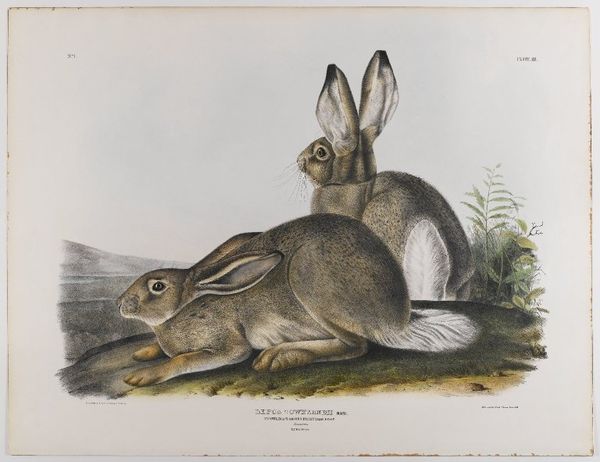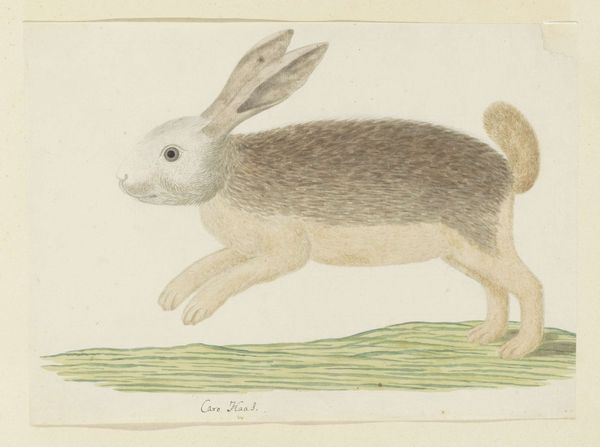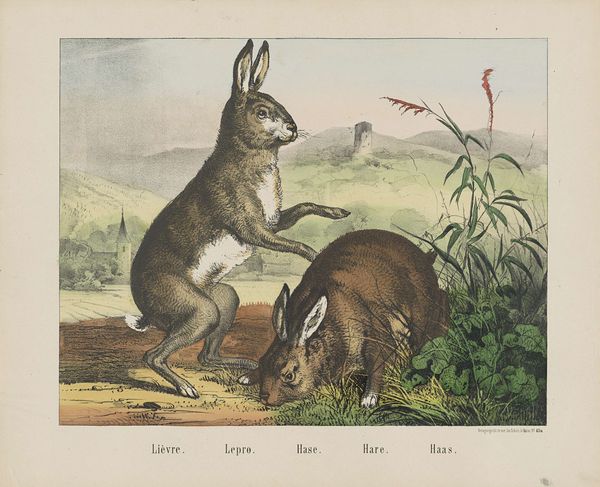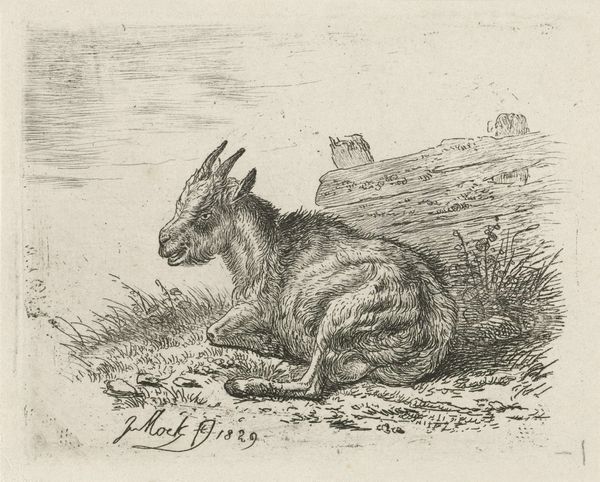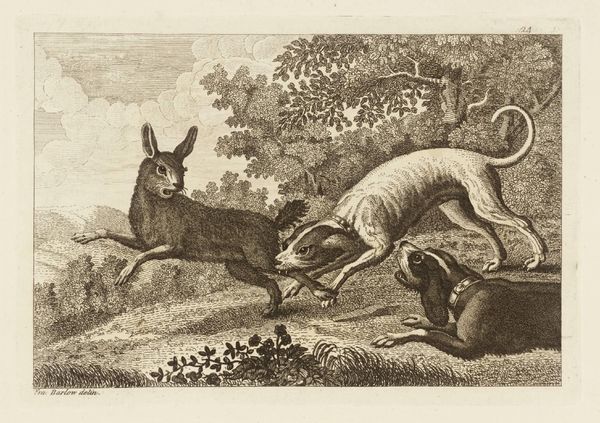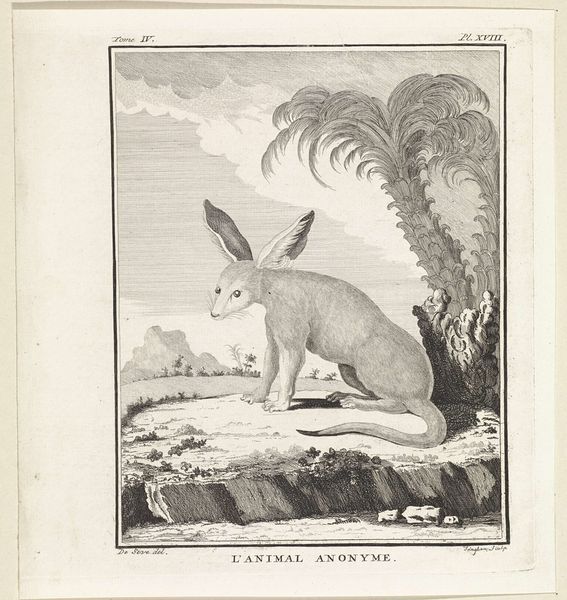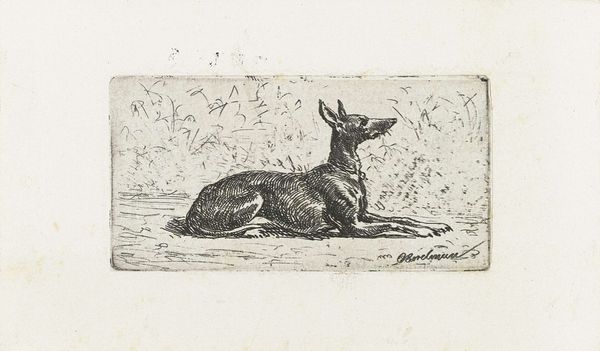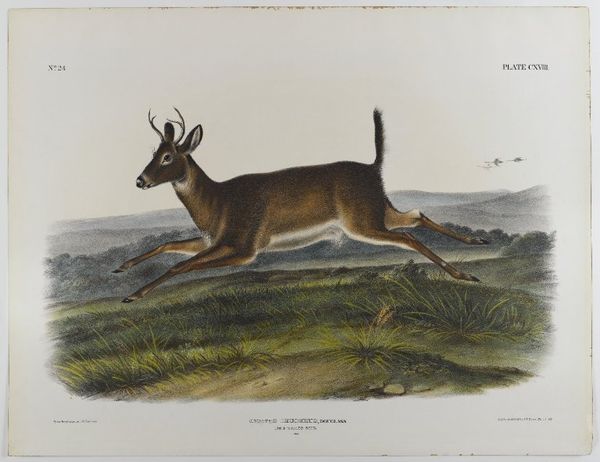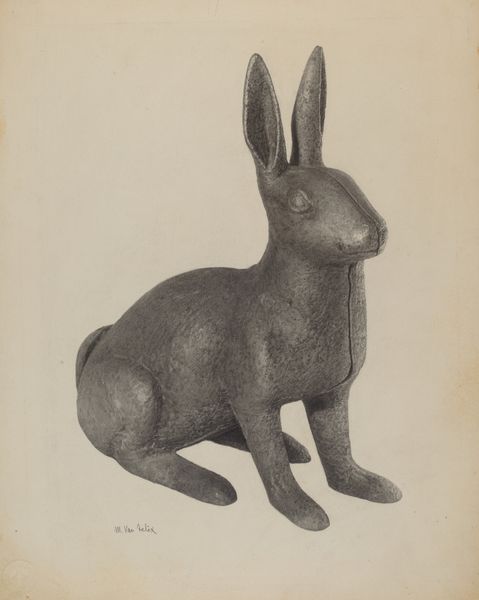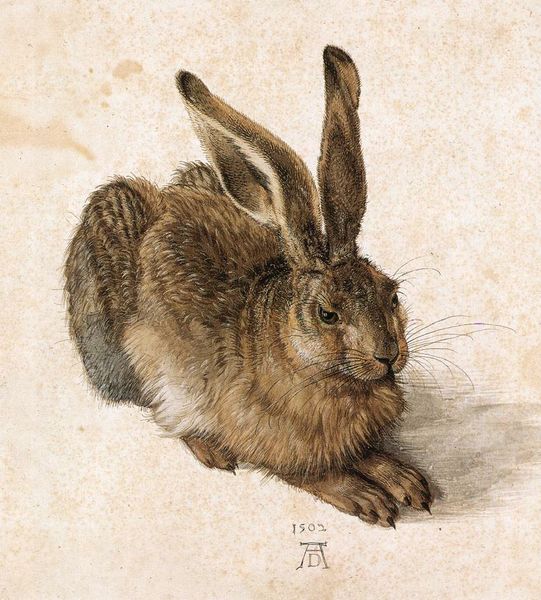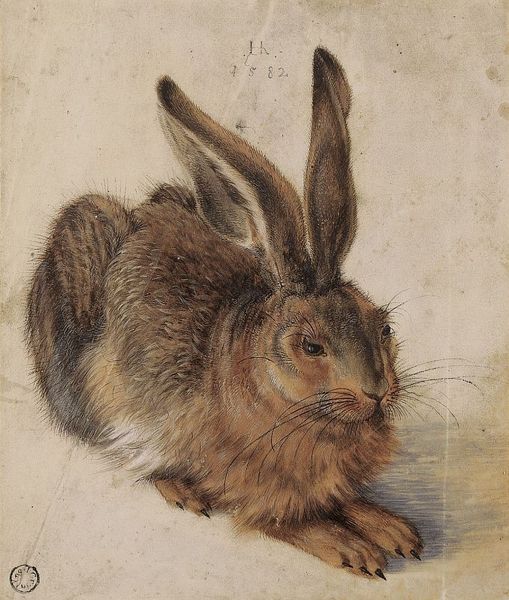
watercolor
#
landscape
#
oil painting
#
watercolor
#
romanticism
#
animal portrait
#
watercolour illustration
#
naturalism
#
watercolor
Copyright: Public domain
Editor: So here we have John James Audubon’s "California Hare," created around 1847, using watercolor. The detail is pretty stunning, and the hare almost seems to be posing. What captures your attention when you look at this work? Curator: What strikes me is the complicated relationship between scientific accuracy and romantic idealism typical of natural history illustration at that time. Audubon intended to create a scientifically accurate record, but the very act of depicting this animal introduces cultural layers. This hare isn't just an animal; it's a representation embedded within a specific socio-political context. Editor: Socio-political context? In what way? Curator: Think about it. Audubon's work was incredibly popular, shaping public perceptions of the American landscape and its wildlife. This romantic vision often served to justify westward expansion, framing nature as both beautiful and available for exploitation. The 'California Hare' becomes an icon within that narrative. And we need to question the act of capture itself: Was this hare alive when it was painted? Did the depiction change how it was then perceived, traded, understood? Editor: That’s a pretty dark perspective, I hadn't considered that at all! Curator: Art, especially art depicting nature, doesn't exist in a vacuum. Museums play a crucial role in shaping the stories we tell about the natural world through these kinds of images. This print, then, not only reflects naturalism and an objective representation of fauna but colonialism, natural resources management, and societal value systems as well. Editor: So, beyond just admiring its beauty, we should also consider the impact and historical baggage of artworks like this. Curator: Exactly! Analyzing art is about looking at its power beyond the surface level. It transforms an animal study into a rich statement about history and the role of art itself in shaping it.
Comments
No comments
Be the first to comment and join the conversation on the ultimate creative platform.
